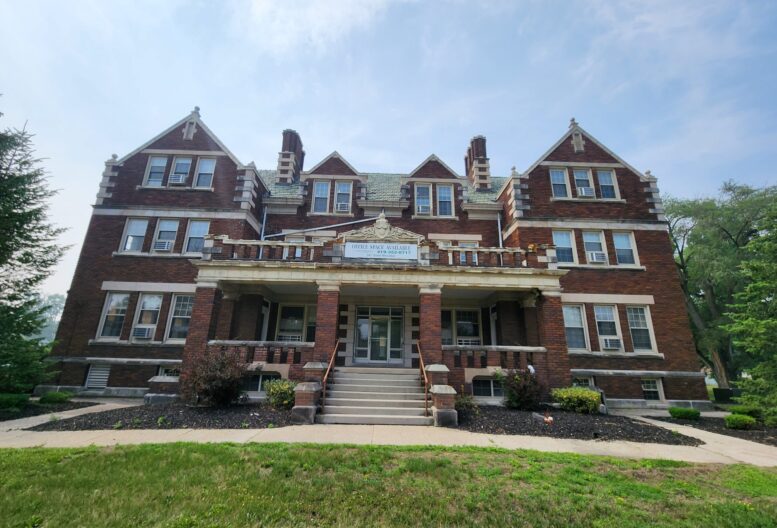(Written by Chris Mowen, Bowling Green Historic Preservation Commission)
The Bowling Green Historic Building of the Month for July is the Gothic style building at 541 W. Wooster St. – the former Wood County Children’s Home, built in 1916. It is brick with stone detailing, featuring a rectangular floor plan with gabled roofs and three stories above grade.
Built for $48,950.82 (a cost of $1,362,373 in today’s dollars), it was designed by S.P. Stewart and Sons.
By the early 1900s, Wood County leaders noticed a need of providing support for children in the community and created the Wood County Children’s Home – temporarily housed across the street at 622 W. Wooster St. while the building at 541 W. Wooster St. was constructed.
When originally built, the Children’s Home housed the kitchen, laundry, and utilities in the basement.
The first floor had an entry foyer, offices, the dining room, a playroom, and bathrooms. The second floor was the dormitory-style bedrooms for the children along with the superintendent’s sleeping room and the matrons’ sleeping quarters. The third floor was used for a variety of purposes including a music room, doctor’s visits, and barbershop. The routine doctor’s visits included tonsillectomies, a few each year, performed on the third floor.
The home accommodated as many as 120 children. The children came to the home due to reports of apparent need, including death of parents, failure of parental support, abandonment, or abuse.
The children at the home attended Church Street Elementary School (the current City Administration Building at 304 N. Church St.) or the city’s Junior or Senior High School. They also were involved in the community, including attending the Methodist Church and older children working in local shops or homes.
The Children’s Home was run by Nellie Repass, superintendent and probation officer. Many children called her “Aunt Nell,” as she ran the home with firm but caring parenting. Neillie maintained the position of superintendent and probation officer until her death in 1940. Robert Chadwick took over her positions until the closing in 1959. Others who helped run the home included Mellie Bennington who was the cook for 25 years, Ms. Rudolph was the secretary, and Pearl Carpenter was a matron of the home. Floyd Foster was a caretaker of the building and Gerald Waltz was recreation director.
The home was financed by community funds as well as donations from community members and, where possible, the families of the children provided financial support.
In 1929, the courts allowed the use of foster homes for all ages and in 1931 the state passed a law requiring licensing of foster homes. Throughout the 1940s, the practice of using licensed foster homes increased and by 1956 the Division of Social Administration of Ohio ceased operation of children’s homes and all children were placed in foster homes.
For three years the building was used as the Detention Home for delinquent children only. In 1959 the building was handed back to the Wood County Commissioners for other uses. The building was used for the Wood County Health Department offices into the 1980s. The building is currently privately owned and used as offices.
Would you like to nominate a historic building or site for recognition? You can do this through the city website at – https://www.bgohio.org/FormCenter/Planning-13/Historic-BuildingSite-Nomination-Form-83
You can learn more about the Historic Preservation Commission by attending their meetings (the fourth Tuesday of each month at 4 p.m.) or by visiting their webpage at – https://www.bgohio.org/436/Historic-Preservation-Commission

